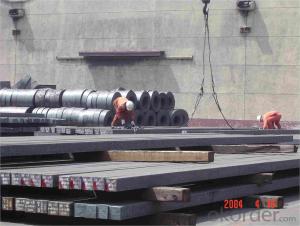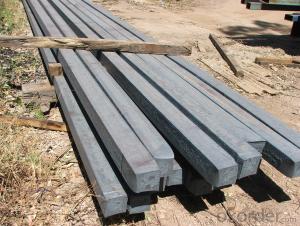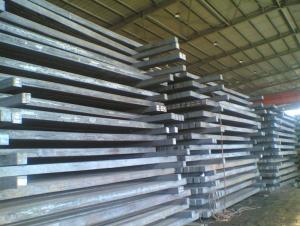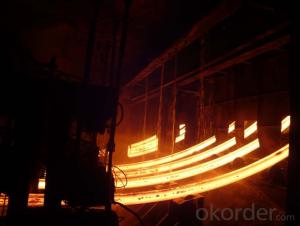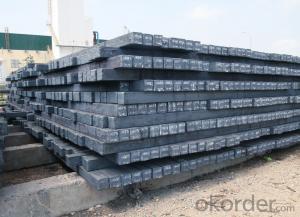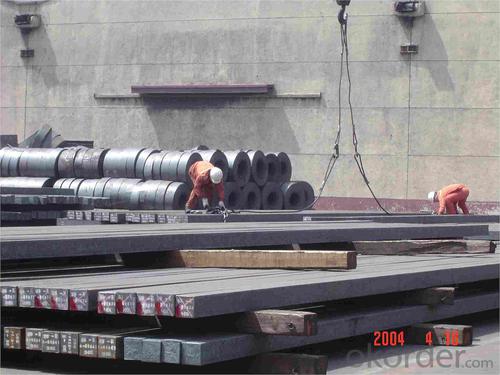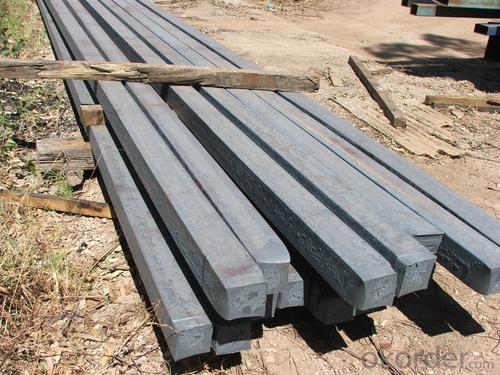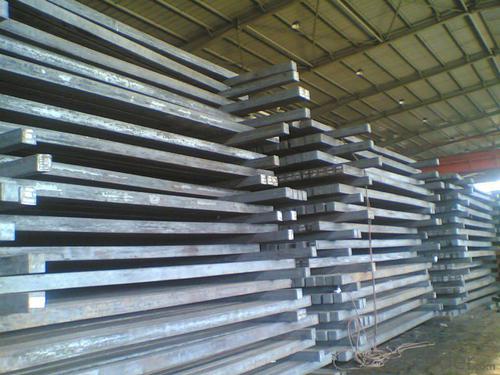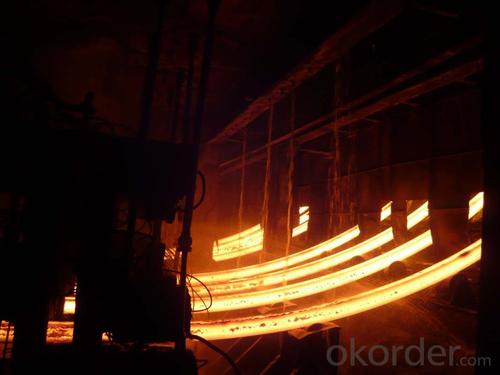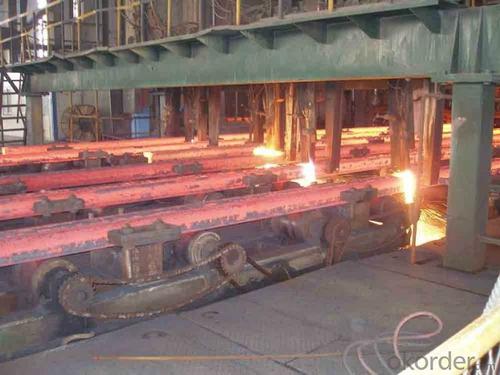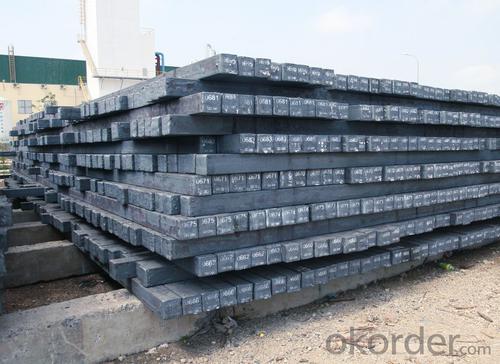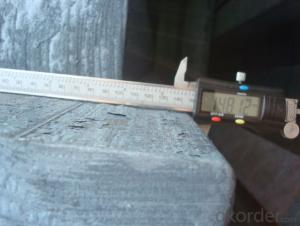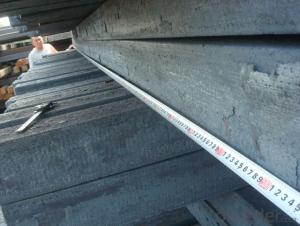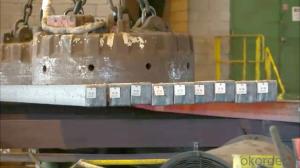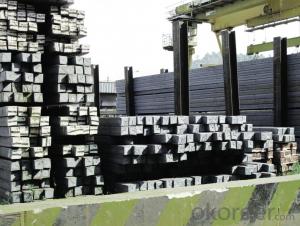Q235/3SP 185MM Blast Furnace Hot Rolled Steel Billet
- Loading Port:
- Tianjin
- Payment Terms:
- TT OR LC
- Min Order Qty:
- 2000 m.t.
- Supply Capability:
- 30000 m.t./month
OKorder Service Pledge
OKorder Financial Service
You Might Also Like
Description of Q235/3SP 185MM Blast Furnace Hot Rolled Steel Billet
Our hot dip galvanised steels consist of a steel substrate with a metallic zinc coating applied by means of a continuous hot dip galvanising process. Metallic zinc coatings are available in steel grades ranging from steel for bending and deep drawing applications, to structural steels and high yield strength steels.
A glossy surface finish obtained under specific skin-pass conditions (either non-skin-passed or skin- passed with smooth cylinders to obtain low roughness) can be provided if required at time of enquiry.
Advantage of Q235/3SP 185MM Blast Furnace Hot Rolled Steel Billet
Uncoated CR steel sheet With the features of in line with the international highest standards in demension and shape, excellent surface finish and properties, the products are mainly used in home appliance and automobile industries.
Galvanized steel sheet(include HDG and EG)
With the features of good corrosion resistance, the products are mainly used in automobile, home appliance, electronics, building and machinery manufacture industries, etc.
Precoated steel sheet With the features of enviromental protection and good processablility, long lasting surface durability, rich in colors, the products are maily used in building, home appliance and furniture industries, etc.
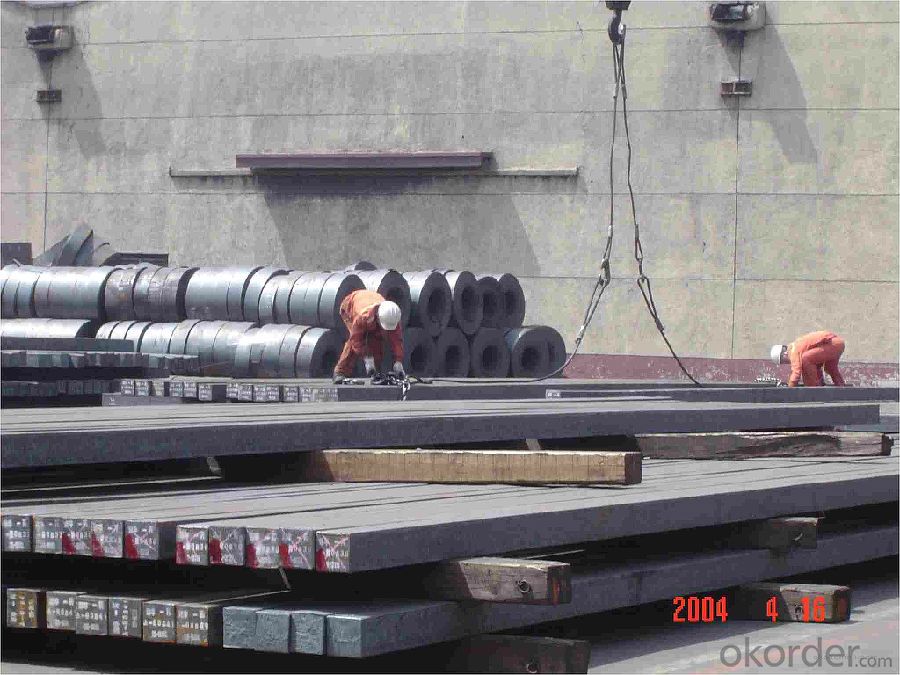
Applications of Q235/3SP 185MM Blast Furnace Hot Rolled Steel Billet
Our hot dip galvanised steels can be used in a very wide range of applications for industrial markets, both indoors and outdoors. Some of the most common applications are:
Building: wide sections for roofing and cladding, doors, door frames, metallic ceilings, partitions, structural members etc
Domestic appliances: all appliances for this sector (both white and brown goods) are manufactured with hot dip galvanised steels
Miscellaneous: electrical cabinets, aeraulic components, air conditioners, road signs etc
Zinc hot dip galvanised steel is suitable for contact with foodstuffs under certain conditions, as specified in European directive 89/109/EEC and French standard NF A 36-712-1. Please contact us for further information on this subject.
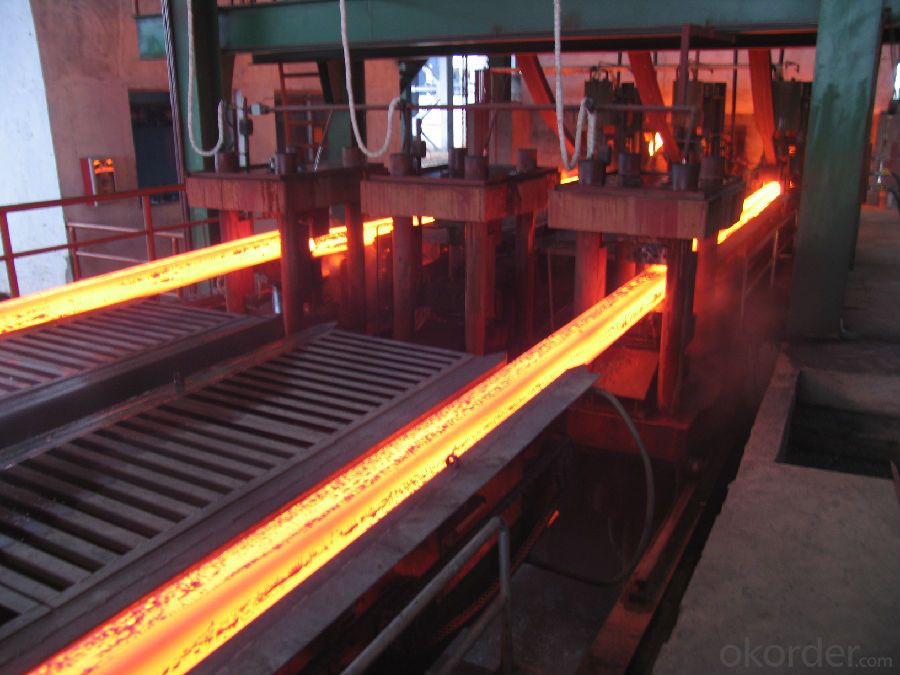
Specifications of Q235/3SP 185MM Blast Furnace Hot Rolled Steel Billet
Quality | Q/BQB 440-2003 | JIS G3312-1994 JIS G3321 | EN 10326-2004 | ASTM A653-02a |
EN 10327-2004 | (BASE PLATE) | |||
(BASE PLATE) | ||||
Commercial Steel | DC51D | SGCC SGLCC | DX51D+Z DX51D+AZ | CS Type A/B/C |
Forming Steel | St01,St02,St03 | SGCD1 SGLCD1 | FS Type A, Type B | |
Drawing | DC52D /DC53D | - | DX52D+Z DX52D+AZ | DDS TYPE A/C |
Steel | DX53D+Z DX53D+AZ | |||
Structural | S280GD (StE28) | SGC400 SGLC400 | S280D+Z DX54D+AZ | SS275 |
Steel | S350GD (StE34) | SGC440 SGLC440 | S350D+Z S350D+AZ | SS340 Class1 |
FAQ of Q235/3SP 185MM Blast Furnace Hot Rolled Steel Billet
We have organized several common questions for our clients,may help you sincerely:
1. How Can I Visit There?
Our company is located in Tianjin City, China, near Beijing. You can fly to Tianjin Airport Directly. All our clients, from home or aboard, are warmly welcome to visit us!
2. How Can I Get Some Sample?
We are honored to offer you sample.
3. Why choose CNBM?
Our delivery time about 15-20days for standard sizes, if you have other requirements like hardness, quanity and width ,it is about 20-40days. But don't worry we also try our best for the delivery time ,because time longer and our cost is higher.
- Q: What are the international standards for steel billets?
- The international standards for steel billets are defined by organizations such as the International Organization for Standardization (ISO) and the American Society for Testing and Materials (ASTM). These standards typically encompass various aspects including chemical composition, mechanical properties, dimensions, tolerances, and surface quality, ensuring consistency and quality across different countries and manufacturers.
- Q: What are the different methods of steel billet cooling?
- There are several different methods of steel billet cooling that are commonly used in the steel industry. These methods include air cooling, water cooling, and controlled cooling processes. One method of cooling steel billets is through air cooling. This involves allowing the billets to cool naturally in ambient air, without any additional cooling mechanisms. Air cooling is a simple and cost-effective method, but it may result in slower cooling rates and less controlled cooling conditions compared to other methods. Water cooling is another common method used to cool steel billets. This involves immersing the billets in water or spraying them with water to accelerate the cooling process. Water cooling provides more efficient and controlled cooling rates compared to air cooling. It allows for faster cooling and can help achieve desired material properties, such as increased hardness or improved microstructure. Controlled cooling processes are a more advanced method used to cool steel billets. These processes involve precise control of temperature and cooling rates to achieve specific material properties. One such process is known as quenching, which involves rapid cooling of the billets in a controlled medium, such as oil or water, to achieve a desired hardness. Another controlled cooling process is known as annealing, which involves slowly cooling the billets to relieve internal stresses and improve their machinability. In addition to these methods, there are also specialized cooling techniques, such as spray cooling and water mist cooling, that are used in specific applications or industries. These methods involve spraying a fine mist of water onto the billets to achieve rapid and uniform cooling. Overall, the choice of cooling method depends on various factors, such as the desired material properties, production requirements, and cost considerations. Different cooling methods offer different benefits and trade-offs, and it is important for steel manufacturers to select the most suitable method for their specific needs.
- Q: How do steel billets contribute to the overall cost-effectiveness of a structure?
- Steel billets play a crucial role in enhancing the overall cost-effectiveness of a structure in multiple ways. Firstly, steel billets are manufactured through a highly efficient process that ensures minimal wastage of raw materials. This efficiency significantly reduces the production cost of steel billets, making them a cost-effective choice for construction projects. Moreover, steel billets possess exceptional strength and durability, enabling them to withstand heavy loads and adverse weather conditions. This strength eliminates the need for frequent repairs or replacements, saving significant costs in the long run. Additionally, the durability of steel billets ensures the longevity of the structure, reducing maintenance expenses and enhancing cost-effectiveness. Another significant contribution of steel billets to cost-effectiveness lies in their versatility. Steel billets can be easily molded and shaped into various forms, allowing for customization and precise engineering in constructing the structure. This versatility eliminates the need for excessive material wastage and enables the optimization of resources, thereby reducing costs. Furthermore, steel billets have excellent fire resistance properties, making them a safe and reliable choice for structures. By minimizing the risk of fire-related damages, steel billets contribute to reduced insurance costs for the structure, enhancing its overall cost-effectiveness. Lastly, steel billets are often produced using recycled steel, which not only reduces the environmental impact but also lowers the production cost. This eco-friendly aspect further enhances the cost-effectiveness of a structure by reducing the overall carbon footprint and making it more sustainable in the long term. In conclusion, steel billets contribute to the overall cost-effectiveness of a structure by minimizing material wastage, providing strength and durability, offering versatility in design and engineering, ensuring fire resistance, and promoting sustainability. These factors collectively reduce production, maintenance, repair, and insurance costs, making steel billets an economically beneficial choice for construction projects.
- Q: How are steel billets rolled into shape?
- Steel billets are rolled into shape through a process called hot rolling. This process involves heating the steel billet to high temperatures, typically above 1,000 degrees Celsius, to make it malleable and easier to shape. The heated billet is then passed through a series of rolling mills, which consist of a pair of cylindrical rollers that rotate in opposite directions. As the billet passes through the rollers, it is gradually compressed and elongated, resulting in a desired shape and size. The rollers apply high pressure on the billet, effectively reducing its thickness and increasing its length. This continuous rolling process allows for precise control over the shape and dimensions of the steel product. To ensure smooth rolling and prevent the billet from sticking to the rollers, lubricants are often applied. These lubricants also help in dissipating the heat generated during the rolling process. Depending on the desired final product, the steel billet may undergo multiple passes through the rolling mills to achieve the desired shape and dimensions. After the initial rough rolling, the steel may be further shaped and refined through additional rolling stages. Once the desired shape is achieved, the steel is then allowed to cool and solidify. This cooling process is crucial to ensure the final product has the desired mechanical properties and structural integrity. Overall, the hot rolling process of steel billets is a crucial step in the production of various steel products. It allows for the efficient shaping and forming of the billets into different shapes, sizes, and profiles, meeting the specific requirements of different industries such as construction, automotive, and manufacturing.
- Q: What are the different methods of hardness testing for steel billets?
- Steel billets can be tested for hardness using various methods, each with its own advantages and levels of accuracy. Some commonly used methods are: 1. Rockwell hardness testing: This method determines hardness by measuring the depth of indentation caused by a specific load on the surface of a steel billet. The hardness value is derived from the depth of penetration, making it a convenient and quick test. 2. Brinell hardness testing: In this method, a spherical indenter is used to create an impression on the surface of a steel billet under a specific load. The diameter of the resulting impression is measured to determine the hardness value. Brinell testing is particularly useful for large billets or materials with a coarse microstructure. 3. Vickers hardness testing: Vickers testing involves using a pyramidal diamond indenter to create an impression on the surface of a steel billet. The hardness value is calculated based on the diagonal length of the impression and the applied load. Vickers testing is suitable for various materials, including steel billets. 4. Knoop hardness testing: Similar to Vickers testing, Knoop hardness testing also uses a pyramidal diamond indenter. However, the indentation shape is elongated and narrower, allowing for measurements on smaller or thinner samples. This method is often used for precise and microhardness testing. 5. Leeb hardness testing: Leeb testing is a portable and non-destructive method that uses an impact device to measure the rebound hardness of a steel billet. The device strikes the surface with a small ball and measures the velocity of the rebound, which is then converted into a hardness value. This method is commonly used for on-site or in-field measurements. 6. Ultrasonic hardness testing: Ultrasonic testing measures the hardness of a steel billet by transmitting ultrasonic waves through the material and measuring the time taken for the waves to travel through the billet. This data is then converted into a hardness value. Ultrasonic testing is non-destructive and suitable for large or thick billets. It's important to consider that each hardness testing method has its own limitations and factors to consider. The choice of method will depend on factors such as the size, shape, and surface condition of the steel billet, as well as the desired accuracy and convenience of the testing process.
- Q: What are the different types of surface finish methods used for steel billets?
- There are several types of surface finish methods used for steel billets, each serving different purposes and achieving distinct surface characteristics. These methods include: 1. Hot rolling: This method involves passing the steel billet through a series of heated rollers, which compress and shape the material. The hot rolling process creates a smooth and glossy surface finish on the steel billet. 2. Shot blasting: In shot blasting, small metallic or non-metallic particles are propelled at high speeds onto the surface of the steel billet. This process removes any scale, rust, or contaminants, resulting in a clean and textured surface finish. 3. Pickling: Pickling is a chemical process that involves immersing the steel billet in an acid solution to remove any oxide scale or surface impurities. This method provides a smooth and corrosion-resistant surface finish. 4. Grinding: Grinding involves using abrasive wheels or belts to remove material from the surface of the steel billet. This process can be used to achieve a precise and smooth surface finish for various applications. 5. Polishing: Polishing is a mechanical process that uses abrasive materials to remove any imperfections or roughness from the surface of the steel billet. This method results in a high-gloss, mirror-like finish. 6. Cold rolling: Similar to hot rolling, cold rolling involves passing the steel billet through a series of rollers. However, in this process, the steel billet is not heated, resulting in a smoother and more precise surface finish. 7. Coating: Coating is a surface finish method that involves applying a protective layer or coating onto the steel billet. This can include paints, varnishes, or specialized coatings to enhance the appearance, durability, or corrosion resistance of the steel billet. Each of these surface finish methods has its advantages and is chosen based on the desired application, aesthetics, and functional requirements of the steel billet.
- Q: How are steel billets used in the manufacturing of springs?
- Steel billets are used in the manufacturing of springs by being heated and then forged or rolled into the desired shape and size. These billets serve as the raw material for producing high-quality springs, providing the necessary strength and durability required for various applications.
- Q: How are steel billets inspected before they are used in production?
- Before being used in production, steel billets undergo a thorough inspection to ensure their quality and adherence to required specifications. The inspection process involves several key steps. Firstly, a visual inspection is conducted to examine the billets' surface for any defects such as cracks, seams, or deformities. Any irregularities can indicate potential weaknesses or problems that may affect performance during production. Secondly, dimensional inspection is performed to verify the billets' size, length, width, and other critical dimensions. This is crucial to ensure that the billets meet the precise requirements of the production process and can be seamlessly integrated into manufacturing operations. Thirdly, ultrasonic testing is often used to detect any internal defects or discontinuities within the billets. Ultrasonic waves are passed through the billet, and reflections or echoes are analyzed to identify any flaws such as voids, inclusions, or cracks that may compromise the billets' structural integrity. Moreover, magnetic particle inspection may be carried out to identify surface or near-surface defects that are not visible to the naked eye. This technique involves applying magnetic particles to the billet's surface and detecting any magnetic leakage caused by defects through the use of magnetic fields. Additionally, chemical analysis is frequently performed to ensure that the steel billets have the desired chemical composition. This involves taking samples from the billets and subjecting them to various tests to determine the percentages of different elements present. This analysis guarantees that the billets possess the necessary chemical properties for the intended application. In conclusion, steel billets undergo a comprehensive inspection process that includes visual examination, dimensional verification, ultrasonic testing, magnetic particle inspection, and chemical analysis. This multi-faceted approach ensures that the billets meet the required quality standards and are suitable for use in production, minimizing the risk of any performance issues or failures during manufacturing processes.
- Q: Can steel billets be used in the production of electrical appliances?
- Steel billets have the potential to be utilized in the manufacturing of electrical appliances. These semi-finished products, commonly employed in the production of diverse steel goods, can be further manipulated and molded into the necessary components for electrical appliances. These components may include casings, frames, brackets, and other structural parts. The utilization of steel offers robustness, longevity, and protection against corrosion, rendering it appropriate for the rigorous demands of electrical appliances. Moreover, steel is readily accessible and cost-efficient, making it a favored option for the production of electrical appliances.
- Q: What is the difference between a steel billet and a steel bar?
- A steel billet and a steel bar are both raw materials used in the manufacturing industry, particularly in the production of metal products. However, there are certain differences between the two. 1. Shape and Size: A steel billet is typically a rectangular or square-shaped semi-finished product with a larger cross-section than a steel bar. It is usually produced through continuous casting or hot rolling processes and has a relatively rough and uneven surface. On the other hand, a steel bar is a long and cylindrical-shaped product that is often obtained by further processing the steel billet through processes like hot rolling, cold drawing, or machining. Steel bars have a smoother and more finished surface. 2. Manufacturing Process: Steel billets are generally produced directly from molten steel through continuous casting or by solidifying the liquid steel in molds. This results in a solid block of steel that is later processed into various shapes. Steel bars, however, are obtained from the steel billets through additional manufacturing processes, such as hot rolling, which involves passing the billet through a series of rolling mills to reduce its size and shape it into a bar. 3. Uses and Applications: Steel billets are primarily used as raw material for further processing, such as forging, extrusion, or rolling, to manufacture various end products like bars, rods, wire, pipes, or structural components. Steel bars, on the other hand, are widely used in construction, manufacturing, and engineering industries for applications that require strength, durability, and a consistent shape. They are used as reinforcement in concrete structures, as shafts or axles in machinery, or as components in the automotive industry. In summary, a steel billet is an intermediate product obtained through casting or hot rolling, while a steel bar is a finished product obtained by further processing the billet. The billet has a larger cross-section and rougher surface, while the bar is cylindrical with a smoother surface. Both billets and bars have distinct uses in the manufacturing industry, with billets serving as raw material for various products and bars being utilized in a wide range of applications that require strength and durability.
Send your message to us
Q235/3SP 185MM Blast Furnace Hot Rolled Steel Billet
- Loading Port:
- Tianjin
- Payment Terms:
- TT OR LC
- Min Order Qty:
- 2000 m.t.
- Supply Capability:
- 30000 m.t./month
OKorder Service Pledge
OKorder Financial Service
Similar products
Hot products
Hot Searches
Related keywords
